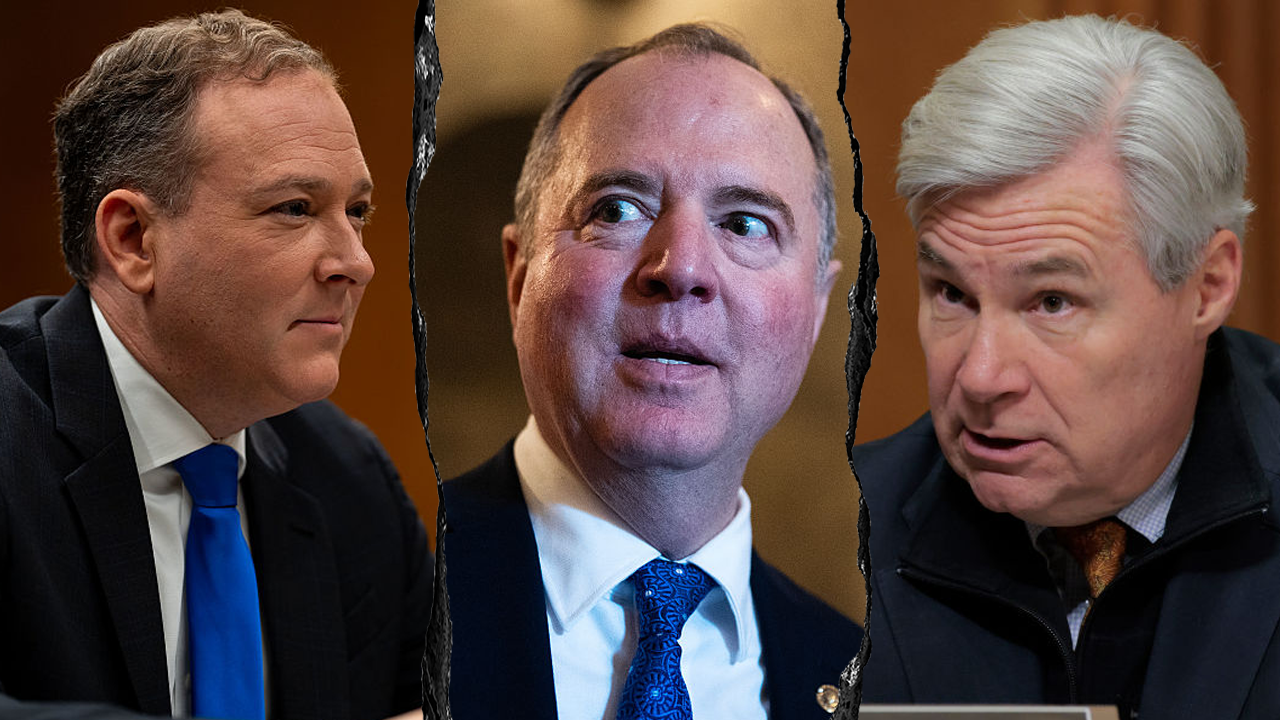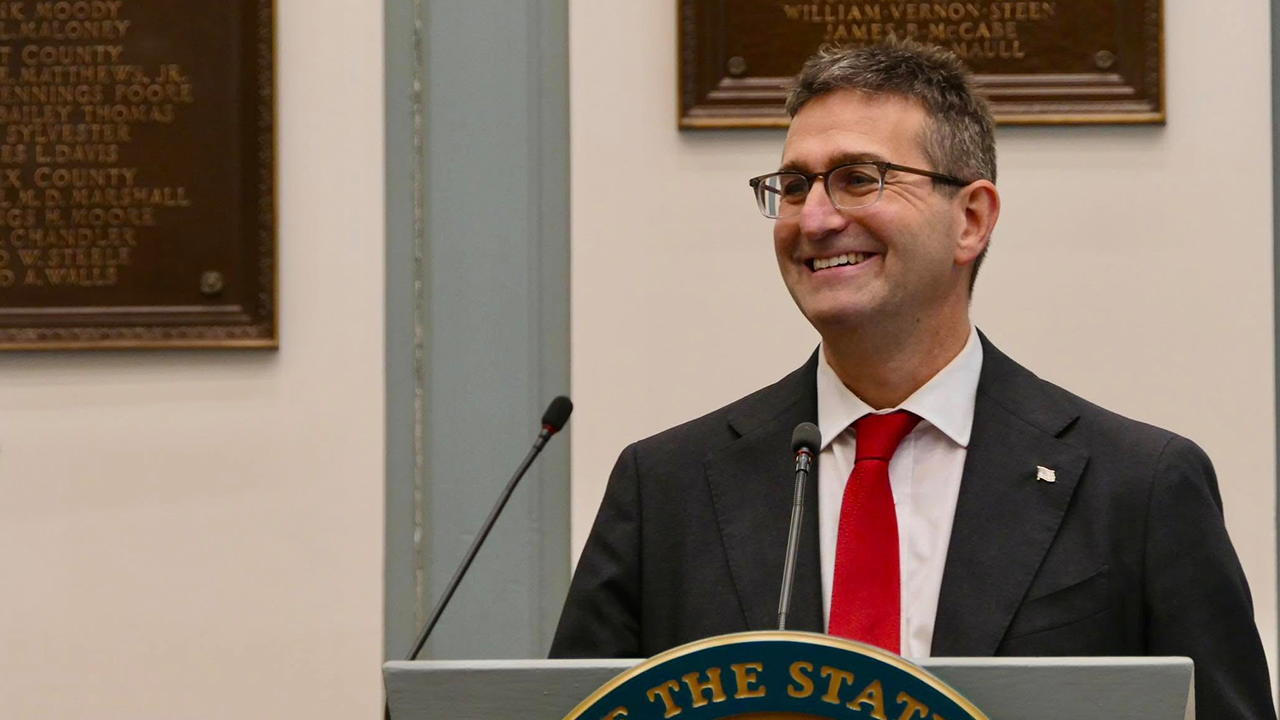Politics
Contributor: Trump is cutting the funding that ensures funds are well spent

Donald Trump’s first term as president was characterized by an unprecedented volume of false and misleading statements — exceeding 30,000, according to multiple news organizations. As he advances through the first 100 days of his second term, his administration appears to be intensifying this pattern, amplifying a misinformation apparatus to justify his actions and policy changes.
As he does so, he is also dismantling the government’s ability to evaluate its own policies, replacing credible evidence with propaganda. The second Trump administration is systematically eliminating funding and personnel for oversight and evaluating programs. This threatens our ability to make informed, evidence-based decisions about policies and programs, leaving the public vulnerable to unchecked misinformation and ineffective governance.
When the process or mechanism for systematically and objectively measuring what is working and what is not, what needs to be improved, and what we should replicate in other places and with other people is dismantled, the public will no longer have access to critical information and data.
The gathering and reporting of credible evidence to inform policy decisions was introduced as part of the Great Society legislation when programs under the 1965 Elementary and Secondary Education Act, sponsored by Sen. Robert F. Kennedy, were required to be evaluated. Since then, evaluation has been key in shaping effective government programs. Its importance was reinforced in 2019 with the passage of the Evidence-Based Policymaking Act, signed by President Trump. This act required each government agency to develop evaluation policies outlining their priorities and practices under the appointment of a chief evaluation officer.
During his first two months back in office, the Trump administration has executed an “evidence drain” by eliminating or drastically cutting back on important research and evaluation programs. The Institute of Education Sciences has been virtually eliminated; only three staff members remain at the National Center for Education Statistics; and just over 20 personnel are left to execute the vital functions of the National Center for Education Evaluation and Regional Assistance. Before Trump’s cuts, these offices employed more than 180 people.
The administration’s cuts to research funding have received more attention, and indeed, research is essential to medical and technological advancement. But cuts to evaluation take a serious toll as well.
Evaluation studies inform us about our national performance. With accurate, carefully designed studies, we may thoughtfully modify programs and policies to improve their performance and wind down those that we learn are not working well. Prudently constructed studies that produce nuanced answers to these and other questions have been commissioned by our government for more than 60 years to address timely and relevant questions, such as those we should be studying right now: What happens when social services are cut? To whom and where are these cuts having the most significant impact? How does shifting federal student loan programs from the Department of Education to the Small Business Administration affect access to these programs?
The public needs to know and understand the implications of cutting evaluation budgets and federal evaluation offices. Without sound evidence to counter or support claims made by public officials, we, the public, risk having access only to false information, which is now regularly pushed on unchecked social media and news outlets. That is why it is so dangerous for the public and so opportunistic for an administration moving toward authoritarianism to cut these studies with a chainsaw.
Fringe individuals with questionable professional credibility have politicized research studies by rebutting well-established findings and spreading disinformation, as we have seen with vaccine effectiveness and safety. The Trump administration has just hired one of these people to study the already discredited link between vaccines and autism. Spending tax dollars on this kind of “research” is an unquestionable waste of resources and a direct effort to continue pushing misinformation to the public, making it more difficult to discern fact from fiction.
We should also be deeply concerned that the current administration will hire equally unqualified and questionably positioned individuals to evaluate the outcomes of its cavalier cuts to funding and personnel.
We must continue to conduct sound evaluation studies of our programs and policies and provide the public with credible information to inform our national, local and kitchen table discussions. Many states and philanthropic organizations support such efforts. They should increase their commitments to this vital work.
To ensure honest appraisals that counter misinformation, we must, as a public, question the quality and accuracy of evidence used to support value-based assessments of what policies and programs are being “well” implemented and doing “good” for the American people. This is central to the survival of our increasingly fragile democracy.
Christina Christie is the dean of the UCLA School of Education and Information Studies.
Insights
L.A. Times Insights delivers AI-generated analysis on Voices content to offer all points of view. Insights does not appear on any news articles.
Viewpoint
Perspectives
The following AI-generated content is powered by Perplexity. The Los Angeles Times editorial staff does not create or edit the content.
Ideas expressed in the piece
- The Trump administration’s cuts to federal evaluation programs, including the Institute of Education Sciences and the National Center for Education Statistics, threaten evidence-based policymaking by dismantling mechanisms that assess program effectiveness.
- Eliminating oversight capacities risks replacing credible data with misinformation, as seen in the administration’s push to study debunked claims like vaccines causing autism, which undermines public trust in scientific consensus.
- These cuts reverse decades of bipartisan support for evaluation, including the 2019 Evidence-Based Policymaking Act, and weaken the public’s ability to hold government accountable for policy outcomes.
Different views on the topic
- Reducing federal bureaucracy, including evaluation programs, aligns with broader efforts to streamline government operations and eliminate perceived wasteful spending, as outlined in executive orders targeting agencies like the Minority Business Development Agency[3].
- Critics argue that federal evaluations can perpetuate bureaucratic bloat and that reallocating funds to direct policy implementation prioritizes fiscal responsibility and economic growth, such as through deficit-reducing tax cuts[1][3].
- Some frame cuts to agencies like the NIH as necessary to curb “partisan missions” and redirect resources toward priorities like national security and immigration enforcement, reflecting a focus on smaller government[2][3].

Politics
Video: Inside the Oval Office Meeting With South Africa’s President

John Eligon, Johannesburg bureau chief, recounts what he witnessed in the Oval Office when President Trump confronted the visiting President Cyril Ramaphosa of South Africa with an elaborate presentation attempting to falsely prove a “genocide” against white Afrikaners.
Politics
Adam Schiff tells EPA's Lee Zeldin he’ll cause cancer after shoutfest: ‘Could give a rat’s a–'

The typically calm confines of the Senate Environment and Public Works (EPW) Committee were the site of several clashes Wednesday between Environmental Protection Agency Administrator Lee Zeldin and Democrats on the panel adjudicating his annual budget request.
Sen. Adam Schiff, D-Calif., rattled off a list of cancers he claimed Zeldin’s actions at the agency could cause, remarking the New York Republican must be proud of how many regulations he’s slashed in such a short time.
“Your legacy will be more lung cancer — it’ll be more bladder cancer, more head and neck cancer. There’ll be more breast cancer, more leukemia and pancreatic cancer, more liver cancer, more skin cancer, more kidney cancer, more testicular cancer, or colorectal cancer — more rare cancers of innumerable varieties. That will be your legacy. … My kids are gonna be breathing that air just like yours,” he said.
“If your children were drinking the water in Santa Ana, Mr. Zeldin… maybe you would give a damn,” he said after holding up a glass of water and claiming the EPA’s move toward streamlining its grants and expenditures will lead to a panoply of bad outcomes.
KASH PATEL ENRAGES SCHIFF IN CLINTONIAN BATTLE OVER THE WORD ‘WE’ AND A JANUARY 6 SONG
“You need the money for a tax cut for rich people because you’re totally beholden to the oil industry,” Schiff fumed, accusing Zeldin of unlawful termination of congressionally appropriated grants.
“You could give a rat’s a– about how much cancer your agency causes,” Schiff said, raising his voice as Sen. Cynthia Lummis, R-Wyo., banged the gavel to note his time was up.
Earlier in the hearing, Zeldin clashed with Sen. Sheldon Whitehouse, D-R.I., over grant reviews and claimed the administrator couldn’t “get [his] story straight.”
Whitehouse appeared to make the claim that the EPA was not individually reviewing each of the grants it was canceling and cited court testimony from Zeldin official Travis Voyles that he had conducted an “individualized review” as of February.
FLASHBACK: SCHIFF, WHO REPEATEDLY CLAIMED EVIDENCE OF RUSSIAN COLLUSION, DENOUNCES DURHAM REPORT AS ‘FLAWED’
Lee Zeldin, left, Adam B. Schiff, center, Sheldon Whitehouse, right (Getty Images)
“You guys are gonna have to start getting your story straight because there are three completely different statements, and they cannot all be true. It cannot be that Voyles personally himself conducted—”
“He did,” Zeldin cut in.
“… the review of 781 grants—” Whitehouse continued.
“He did; I did,” Zeldin cut in again.
“… and that [Deputy Administrator Daniel] Coogan saw to it that it was individually done,” Whitehouse said as the two men talked over each other.
After some more back-and-forth, Zeldin told Whitehouse that it must be a “crazy concept” for him to consider that more than one person could review the hundreds of grants in question and for more than one per calendar day.
Zeldin said he and his EPA colleagues have been “busting their a–” to identify waste and abuse and that Whitehouse was only interested in scoring political points.
“I’m using the facts as your employees stated them,” Whitehouse claimed.
“We’re on it every single day, because we have a zero-tolerance policy towards wasting dollars,” Zeldin shot back.
“You don’t care about wasting money,” he went on, adding that he had promised committee member Sen. Pete Ricketts, R-Neb., at a prior hearing that he would make reviewing grants in this way a priority of his tenure. “I have to come back here in front of Sen. Ricketts today, and even though you don’t care about wasting tax dollars, Sen. Ricketts does.”
Fox News Digital reached out to Sen. Shelley Moore Capito, R-W.V., chair of the Committee on Environment and Public Works for comment, but did not hear back by press time.
Politics
Column: The 'One, Big, Beautiful Bill' is a big, ugly mess

The “One Big Beautiful Bill” is one big, ugly mess.
We’ve seen false advertising in naming laws before — the Democrats’ 2022 Inflation Reduction Act jumps to mind. Yet no legislation has been as misbranded as the Republican tax and spending cuts that President Trump, the branding aficionado himself, is pushing along a tortuous path in Congress.
Trump’s appeal to many Americans has always been his purported penchant for “telling it like it is.” But he’s doing the opposite by labeling as the “One Big Beautiful Bill” a behemoth that encompasses just about everything he can’t even try to do by unilateral executive orders — deeper tax cuts, more spending on the military and on his immigration crackdown and, yes, Medicaid cuts. His so-called beauty is a beast so frightening that ratings firm Moody’s saw the details last week, calculated the resulting debt and on Friday downgraded the United States’ sterling credit rating for the first time in more than 100 years. That likely means higher interest costs for the nation’s increased borrowing ahead.
And yet, in another example of the gaslighting at which Trump and his party are so adept, the White House and House Republican leaders dismissed the rebuke of their bill. Treasury Secretary Scott Bessent said it would spur economic growth — the old, discredited “tax cuts will pay for themselves” argument. Speaker Mike Johnson said the Moody’s downgrade just proved the urgent need to pass the big, beautiful bill with its “historic spending cuts.” Which only proved that Johnson didn’t read Moody’s rationale, explaining that spending cuts would be far exceeded by tax cuts, thereby reducing the government’s revenues and piling up more debt.
The Republican Party, which postures as the fiscally conservative of the two parties despite decades of evidence to the contrary, would add about $4 trillion in debt over the next 10 years if its bill becomes law, according to Moody’s. Other nonpartisan analyses — including from the Congressional Budget Office, the Committee for a Responsible Federal Budget and the Penn Wharton Budget Model of the University of Pennsylvania, similarly project additional debt in the $3-trillion-plus to $5-trillion range, more if the tax cuts are made permanent as Trump and Republicans want.
No surprise: Trump, after all, set a record for the most debt in a single presidential term: $8.4 trillion during Trump 1.0, nearly twice what accrued under his successor, President Biden. Most of Trump’s first-term red ink stemmed from his 2017 tax cuts and spending, which predated the COVID-19 pandemic and the government’s costly response.
“This bill does not add to the deficit,” White House Press Secretary Karoline Leavitt insisted to reporters on Monday, showing yet again why such a facile dissembler was chosen to speak for the habitually prevaricating president.
“That’s a joke,” Republican Rep. Thomas Massie of Kentucky responded.
Worse, it’s a lie.
And no surprise here, either, but Trump’s tariffs — another economic monstrosity that he’s declared “beautiful” — aren’t paying for this bill despite his claims. Yet the president repeated that falsehood on Tuesday (along with others), when he visited the Capitol to strong-arm Republican dissidents, including Massie, into supporting the measure ahead of a House vote. (Inside a closed caucus with House Republicans, the president reportedly called for Massie to be unseated; the Kentuckian remains opposed.)
“The economy is doing great, the stock market is higher now than when I came to office. And we’ve taken in hundreds of billions of dollars in tariff money,” Trump told reporters at the Capitol. Every point a lie.
(This week provided yet more evidence that he’s utterly wrong to keep insisting that foreign countries pay his tariffs, not American consumers. After Walmart, the largest U.S. retailer, said late last week that it would have to raise prices, Trump posted that it should “ ‘EAT THE TARIFFS.’ ” He added: “I’ll be watching, and so will your customers!!!” This after a Walmart exec said that “the magnitude of these increases is more than any retailer can absorb.”)
While details of the budget bill shift as Republican leaders dicker with their dissidents, here’s the ugly general outline, according to Penn Wharton:
Extending and expanding Trump’s 2017 tax cuts, which otherwise expire this year, would cost nearly $4.5 trillion over 10 years, $5.8 trillion if the cuts are permanent. (Mandating that tax cuts expire after a time, as Trump did in 2017, is an old budget gimmick to understate a bill’s cost. The politicians know they’ll just extend the tax breaks, as we’re seeing now.) The bill’s proposed spending increases for the military, immigration enforcement and deportations would cost about $600 billion more.
Spending cuts over 10 years, mostly to Medicaid as well as to Obamacare, food stamps and clean-energy programs, would save about $1.6 trillion. That offsets as little as one-quarter of the cost of Trump’s tax cuts and added spending.
Also, the bill is inequitable. The tax cuts would disproportionately favor corporations and wealthy Americans. Its spending cuts, however, would mostly cost lower- and some middle-income people who benefit from federal health and nutrition programs. Changes to Medicaid, including a work requirement (92% of recipients under 65 already work full or part-time, according to the health research organization KFF), and to Obamacare would leave up to 14 million people without health insurance.
Penn Wharton found that people with household income less than $51,000, for example, would see their after-tax income reduced if the bill becomes law, and the top 0.1% of income-earners would get hundreds of thousands of dollars more over the next 10 years. Beyond that time, Penn Wharton projected, “all future households are worse off” given the long-term impact of spiraling debt and a tattered safety net.
“Don’t f— around with Medicaid,” Trump told Republicans at the Capitol, according to numerous reports. How cynical, given that he was pressuring them to vote for a bill that would do just that.
All of which recalls an acronym that’s popular these days: FAFO.
@jackiekcalmes
-

 Education1 week ago
Education1 week agoA Professor’s Final Gift to Her Students: Her Life Savings
-

 Politics1 week ago
Politics1 week agoPresident Trump takes on 'Big Pharma' by signing executive order to lower drug prices
-

 Culture1 week ago
Culture1 week agoTest Yourself on Memorable Lines From Popular Novels
-

 Education1 week ago
Education1 week agoHarvard Letter Points to ‘Common Ground’ With Trump Administration
-

 News1 week ago
News1 week agoAs Harvard Battles Trump, Its President Will Take a 25% Pay Cut
-

 Culture1 week ago
Culture1 week agoBook Review: ‘Original Sin,’ by Jake Tapper and Alex Thompson
-

 News1 week ago
News1 week agoWhy Trump Suddenly Declared Victory Over the Houthi Militia
-

 News1 week ago
News1 week agoAustin Welcomed Elon Musk. Now It’s Weird (in a New Way).














